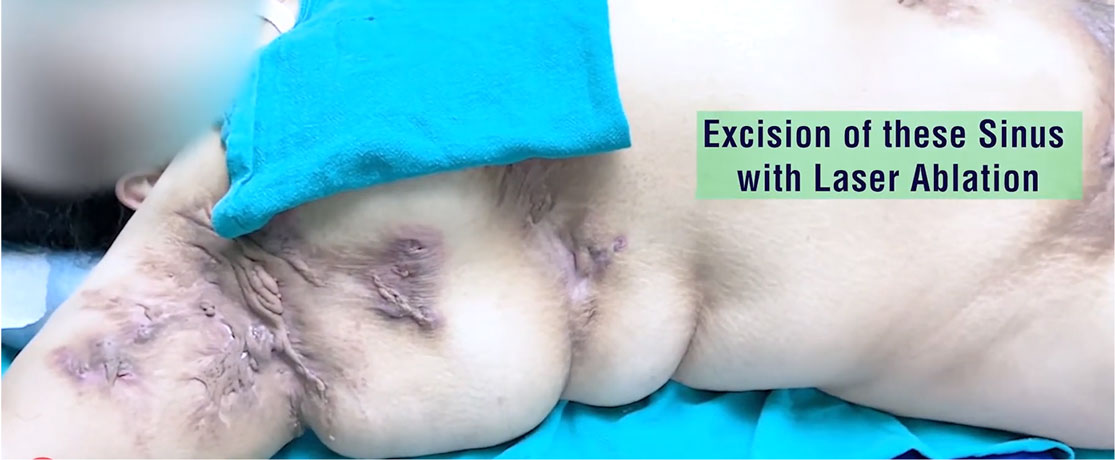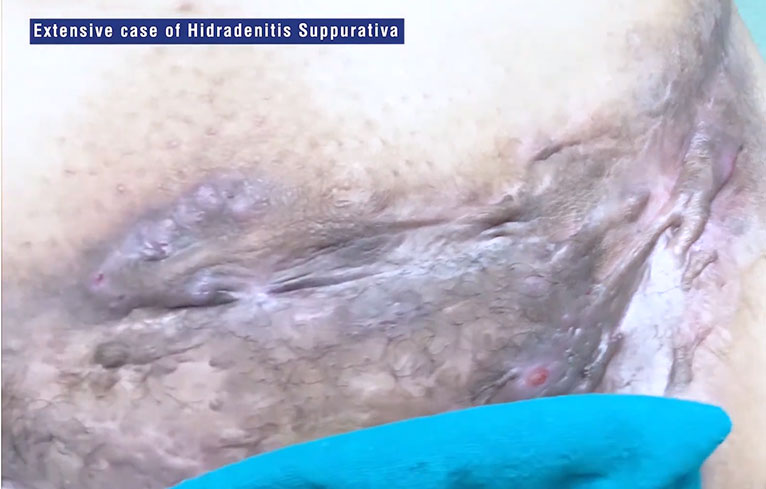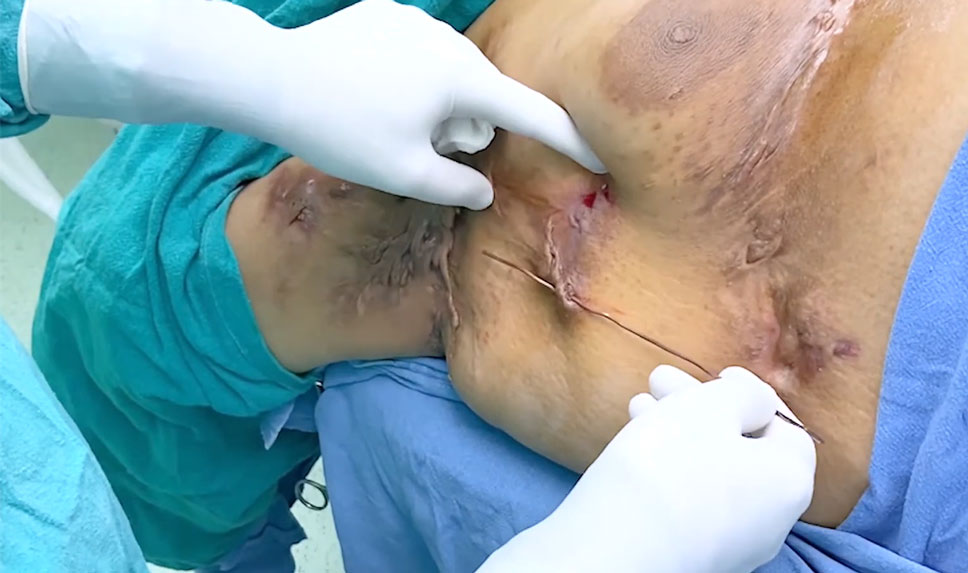In fact, in rare circumstances, particularly if left untreated for a long period, Hidradenitis Suppurativa (HS) can raise the risk of several forms of cancer.
In some important case studies “Individuals with hidradenitis suppurativa (HS) possess a heightened susceptibility to cancer development. This include hematologic malignancies, solid tumors, and cutaneous squamous cell carcinoma (SCC) arising from HS lesions.”

Dr. Mir Asif Rehman explains that chronic inflammation and repeated scarring associated with severe or longstanding HS may lead to the development of squamous cell carcinoma (SCC), a type of skin cancer, particularly in areas affected by persistent lesions.
Key factors
- Patients with HS also have an increased risk of developing noncutaneous cancers.
- Malignancy is a comorbidity associated with HS.
- Both primary cancers and cutaneous metastases can masquerade as HS lesions.
- Hidradenitis suppurativa is linked to several comorbidities, including metabolic, cardiovascular, musculoskeletal, gastrointestinal, and mood disorders.
Types of Cancer Linked to HS:
- Squamous Cell Carcinoma (SCC) is most usually associated with chronic HS.
- Other malignancies, such as basal cell carcinoma or lymphoma, may also be associated, but this is extremely rare.
What can be the Warning Signs?
- Non-healing or rapidly growing lesions in HS-affected areas.
- Changes in color, size, or texture of the skin around HS lesions.
- Persistent pain or unusual discharge.
Hidradenitis Suppurativa (HS) is a persistent dermatological illness that predominantly impacts regions of the body where skin surfaces interlace. Dr. Mir Asif Rehman elucidates that hidradenitis suppurativa (HS) is marked by painful nodules, abscesses, and sinus tracts in areas susceptible to friction, perspiration, and hair proliferation.
Commonly Affected Areas that can be affected by HS:

1. Axillary Region: A often affected area due to perspiration and friction.
2. Groin area : Skin-to-skin contact and moisture collection are common causes of irritation in the inner thighs and groin.
3. Buttocks: Lesions often appear in areas of high friction, such as the intergluteal cleft.
4. Breast Region: Women may get HS beneath and around their breasts, particularly if they have large breasts or sweat a lot.
5. The labia in females and the scrotum in males may be affected, causing significant discomfort.
6. Thighs: Inner thighs are prone to lesions, especially in people with extra body weight.
7. Neck and Retroauricular Regions: HS lesions might appear in these areas less commonly, particularly in severe cases.
Prevention and Early Detection:
- Regular monitoring by a concerning doctor who are expertise in HS Treatment.
- HS should be treated early and effectively in order to reduce the amount of chronic inflammation.
- For the purpose of preventing complications, surgical treatment of chronic or severe lesions is recommended.
Dr. Rehman emphasizes that, while the risk of cancer in HS patients is minimal, it is critical to be cautious and seek medical assistance if any worrisome changes arise. Early intervention is critical for lowering the likelihood of problems.
Treatment of Hidradenitis Suppurativa

A range of treatments is available for individuals with this condition to alleviate discomfort and mitigate the indications or symptoms of their illness.
The primary therapy modalities for hidradenitis suppurativa include:
- Antibiotics,
- Immunosuppressants,
- Surgical intervention, and
- Topical therapies.
In extreme instances, surgical intervention may be required to excise all contaminated tissue to avert any future recurrence of the condition.
————————————————————————————————————————————————————————————-
Facts & Resource:
- Mucinous adenocarcinoma of the buttock associated with hidradenitis:
Kim SJ, Kim TG, Gu MJ, Kim S. Mucinous adenocarcinoma of the buttock associated with hidradenitis: A case report. World J Clin Cases 2020; 8(18): 4200-4206 [PMID: 33024779 DOI: 10.12998/wjcc.v8.i18.4200] - Cancer and hidradenitis suppurativa
https://www.sciencedirect.com/science/article/pii/S0738081X24001834
- Chronic hidradenitis suppurativa and perianal mucinous adenocarcinoma. A case report. – https://europepmc.org/article/med/17393769?utm_medium=email&utm_source=transaction&client=bot
- Hidradenitis suppurativa
https://www.thelancet.com/journals/lancet/article/PIIS0140-6736(24)02475-9/fulltext
